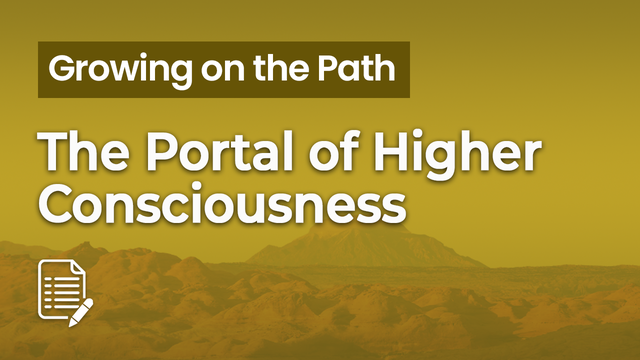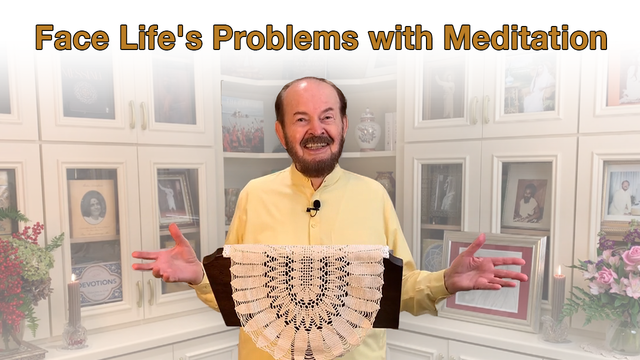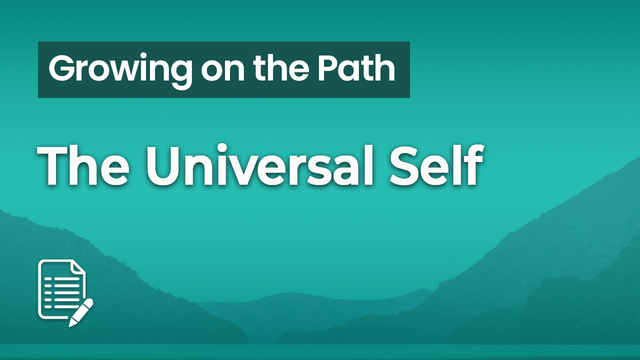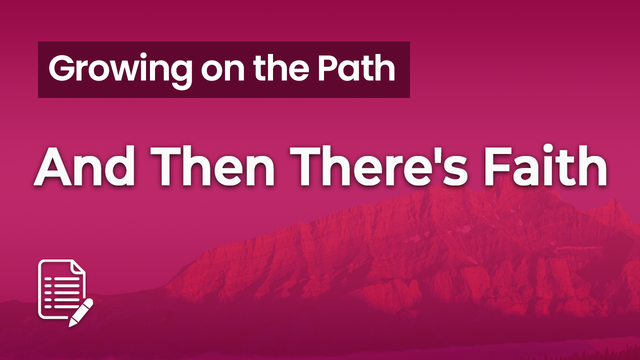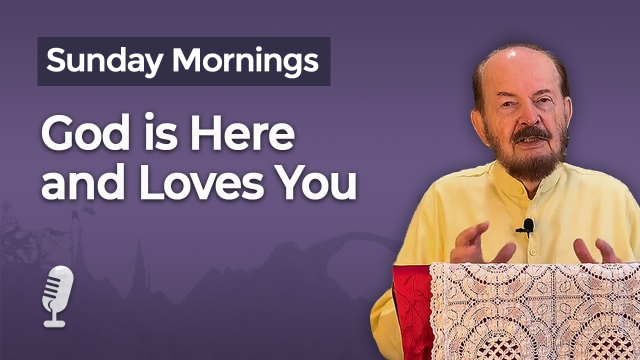
Ramakrishna Ananda
Meditation — The Good Will Witness
Want a sure-fire practice to enter higher consciousness?
Welcome to the doorway of Higher Consciousness!
While higher consciousness is occasionally approached in a way which bypasses the Good Will Witness stage, over ninety percent of seekers first enter higher consciousness through this natural maturation, this exaltation of their good will.
You may wish to study this technique and its method, pausing in your reading of the rest of this website until you’ve had several opportunities to practice the Good Will Witness. Please keep in mind as you develop this technique that no website or book can replace a qualified teacher and that you should only proceed, with any technique here, as far as comfort allows.
If you ever become uncomfortable, simply sit back, relax, and resume the practice again when you find it comfortable.
Also, if you are doing therapy with a psychologist or psychiatrist, ask his or her advice before doing any meditative practice. Many who are suffering mental/emotional illness benefit richly from meditation. But some others become too emotional or are haunted by memories.
Now, if you’ve striven to be more conscious from morning through night each day, and if you have become a thoughtful person with a heart and mind full of good will, you will find great delight in the following practice. This excellent method, which has helped numerous people, is merely a suggested way. You may have a better way to meditate which will bring about the results you are striving for.
Probably you will have greater success if you first read this whole Lesson before doing this method step by pleasant step.
Selecting Your Meditation Object
Stand and take a nice stretch.
Then sit comfortably with your spine straight. Do not do this meditation practice until three hours after a meal. It’s good to meditate before a meal or in the morning before work, or in the late afternoon after work, or in the evening. Be sure you are awake and aware as you do this. Falling asleep will not precipitate an experience of higher consciousness.
Now choose a meditation object. That is, something to meditate on. The meditation object can be a word, or a physical object that you will look at. It could be a mental picture that you can hold in your mind while your eyes are closed.
Your object could be a specific center in your body. For example, the point half an inch above where your eyebrows meet is an excellent place. It is called the third eye by most people who meditate there. Perhaps a better place for most seekers is called the heart center. Think of a point inside your spine directly back of the heart. As your concentration moves in the area of your forehead or heart center, it will become quite specific and one-pointed. You will soon be able to precisely focus on your chosen center. Try both centers and note which one is most comfortable for you, as well as easiest to focus upon. Then again, you may not choose to make either center your meditation object.
At first, you may wish to try various meditation objects. But remember never to force yourself to focus and remember that the object you select must be pleasing to your mind. Your meditation object needs to be relatively easy for you to think about; and you should be able to direct your feelings toward your meditation object, naturally and pleasantly.
Words used as your meditation object could be Love, Joy, Oneness. Also, you could choose to think of the name of one of the world’s great beings: Jesus Christ, Buddha, Ramakrishna, Moses, Krishna, or others.
Form or Formless
So, first select a meditation object. We are all somewhat differently wired and some people prefer to think about an object in front of them — a picture, a flower, a bowl, a candle flame. Others prefer to visualize in their minds the form of Jesus, Buddha, Ramakrishna, Virgin Mary, Sarada Devi, or perhaps one of the great saints or bodhisattvas (potential Buddhas who refuse to enter nirvana in order to serve suffering mankind). Some prefer to meditate on a triangle, a cross, or a circle or sphere which they visualize in the front of their minds.
Others prefer to think of formless, infinite expansiveness. However, focusing on the infinite is rather difficult to do. The human mind can hardly ever think beyond names, things, and shapes. But, meditation on the vast sky sometimes helps those who have the ability to think in a formless way. The sky could be considered an abstract meditation object.
Choose your meditation object, one that is vivid to you. Make it a color you prefer. Your meditation object needs to be as pleasing and interesting to your mind and emotions as possible.
Starting Your Meditation
Having selected your meditation object, put aside your thought of it for a moment. Take three to six deep, slow breaths — if you can comfortably do this. Your exhalation should be calming and pleasant. Feel as you bring air into your nostrils that you are imbibing a rare and very subtle wine.
Having done your deep breaths, sit calmly with a relaxed body and an attitude of good will. Now, briefly think of all the people you’ve made contact with today. Maintain an attitude of good will as you think of each person. Also consider, as you begin meditating, do you have good will for yourself, and for this practice? Or, are your resenting that you are sitting quietly in meditation as other activities come to mind? Are you resenting that you may ultimately achieve higher consciousness and have to change in some ways? (Yes, these are strange questions but some people are against themselves in most everything they undertake.)
Now, while holding the attitude that you are radiating good will out from yourself — perhaps from your heart center, perhaps from your third eye, perhaps from your chest and face in general — let the energy of your thoughtfulness, of your goodness, move outward from you. Enjoy a period of good will.
Direct You Good Will To Your Meditation Object
Encourage the good will to radiate outward in all directions — in front of and behind you, above and below you, right and left. Also, direct your good will to flow through you when you sense it well. Let good will fill your mind and chest, your whole body. Perhaps thoughts of things you don’t like about yourself float into your awareness. Let go of them. You can work on your shortcomings with greater insight after meditation. For the present, have good will for yourself as well as others.
At this point, the main phase of your meditation begins. Bring your meditation object, now, into your meditation — either the word or words you choose to say, or your heart center, your third eye, the picture before you, or the visualization in front of your mind. All you have to do is simply hold your meditation object in your awareness and direct your good will to it. Let your good will pervade the meditation object. Let good will saturate it. Fill your meditation object with the light of your love, with the light of your thoughtfulness.
Don’t strain, don’t try too hard. Maintain your good will even if your concentration or your meditation object flies away at times. Maintain your good will and patiently continue gathering and focusing your good will on your meditation object. Enjoy this. Let your good will develop. It will become progressively stronger with regular practice. Let your applied good will flow easily and naturally into your meditation object, or person.
Now you know how to do it.
— Ramakrishna Ananda
